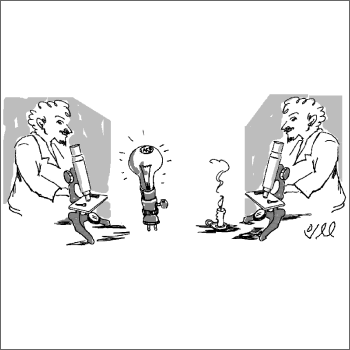Comparing Images
Digital images that will be compared to one another should be acquired under identical conditions, and any post-acquisition image processing should also be identical.

- Accurate comparison of treated and control digital images is difficult or impossible if the images are not acquired under similar conditions.
- Several types of instruments, like confocal fluorescence microscopes, allow users to adjust the signal amplification settings on every image.
- With signal amplification, small features may appear larger or smaller than they do in other images solely due to the degree of amplification and the artifacts of aliasing (see also Nyquist sampling as discussed in guideline #11).
- Investigators would do well to quiz their students, staff and post-docs about image acquisition settings. Instrument core facilities are more often frequented by students and staff. The investigator is typically not involved in the decision making about the instrument settings, however, they are often intimately involved in the interpretation of the image data.
- Many newer instruments store metadata regarding the instrument settings used for each image. This should allow investigators to review the instrument settings.
- When a group of images is to be compared to one another, the processing of the individual images should be identical.
- This would include acquisition techniques such as background subtraction and white-level balancing. These techniques should be documented in the methods section of published research.
- This would include groupings of images that will be published together as publication figures.
- If all the images in a figure have been processed in the same manner, then the viewer can better understand how each image relates to the others in the group.
- If there is a bona fide reason that the images in a figure were processed differently, the author must explain the rationale in either the methods section or the figure legend. Failure to disclose this information means that the authors are providing misleading information to the viewer
|

